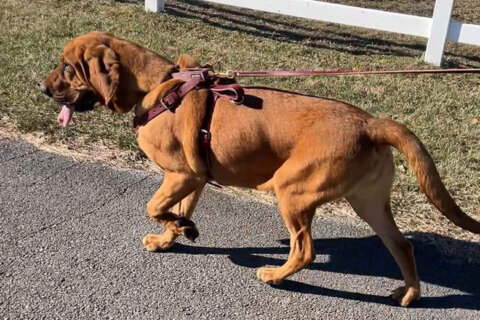The man who was fatally shot by police at a McDonald’s drive-through in Montgomery County, Maryland, has been identified. And police said that a thorough investigation into what happened is underway.
Ryan Leroux, 21, of Gaithersburg, was in the driver seat of a white Honda CR-V, which was outside the fast-food restaurant on Flower Hill Way on Friday night.
Officers responded to a complaint that he refused to pay for food he ordered or exit the drive-through.
Montgomery County police Chief Marcus Jones said during a news conference that officers saw a handgun in the front seat. They ordered Leroux to exit at gunpoint and requested backup.
Jones said the officers tried to de-escalate the situation for 30 minutes and called for a negotiator. They formulated a plan and called Leroux on his phone, making several attempts to talk to him.
A sergeant on scene spoke with Leroux on the phone and tried to convince him to leave the vehicle in a safe manner.
“However, he was not cooperative. Just prior to the negotiator’s arrival, there was a use of force, resulting in Mr. Leroux being shot by the officers,” Jones said.
A loaded gun was recovered, Jones said, and they also found alcohol. Leroux was taken to the hospital, where he was pronounced dead.
The department’s major crimes division is investigating what happened, and the Howard County State’s Attorney’s Office will review the shooting at the end of the investigation.
County Executive Marc Elrich joined Jones Monday and called what happened a “tragedy.”
“No one would have expected this outcome from the way the video began … and it makes it even more tragic. I want to assure everybody, this is going to be fully investigated,” said Elrich, who described the conversation before the shooting as seemingly “static and peaceful but no reason to think anything was gonna come about. And within a matter of seconds, all that changed.”
Jones said that body camera footage is a helpful tool, and the plan is to release the video after review.
“I want to make clear their body-worn cameras are a helpful tool. But they do not replace the human eye in what the officers actually saw. We are working to ensure all video footage is recovered from the scene,” Jones said.
Assistant Chief Carmen Facciolo said body cameras point outward, facing from the officer toward where the eyes would see; the cameras do not have “peripheral vision.”
“So in instances where we review and look at body worn cameras, they’re one tool of the toolkit to help us in a criminal and criminal investigation. We also have to review other surveillance footage and video cameras from around the scene to get all angles of a specific incident at hand,” Facciolo said.
Police, Jones said, are also seeking more videos from the shooting.
The officers who were involved in the shooting have been placed on leave. Jones identified them as Sara Vaughan, Brooks Inman, John Cerny and Romand Schmuck, and they have a combined 58 years of police experience.
Jones said how many shots were fired is still under investigation and is very difficult, even for the camera footage, to ascertain whether Leroux was holding a gun.
“I don’t know that at this point,” Jones said.
Leroux’s father told NBC Washington that his son was in a “bad place” and had a “mental health issue,” and that he reviewed some of the police video and did not see a gun in his son’s hand.








